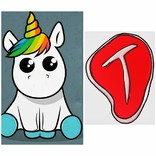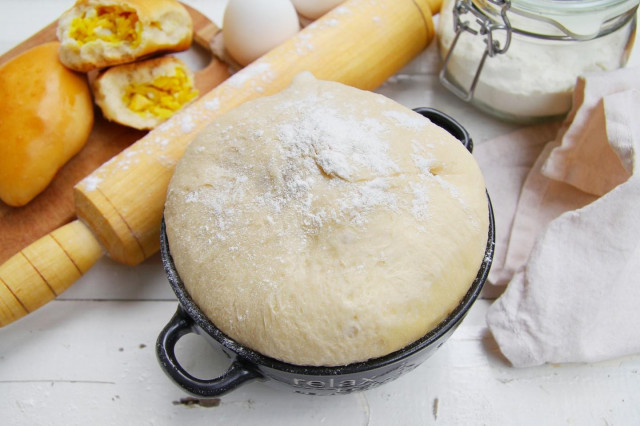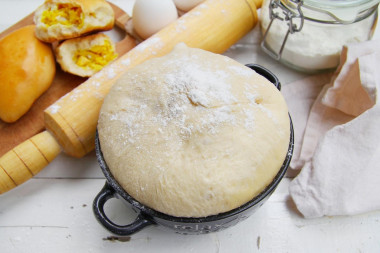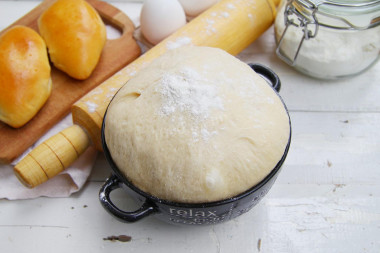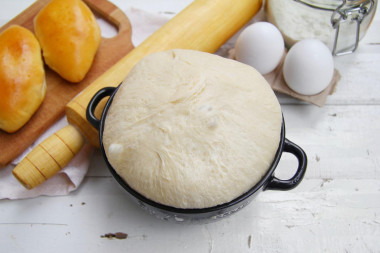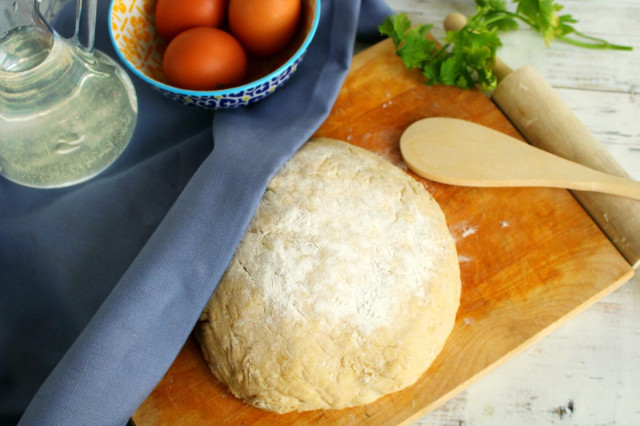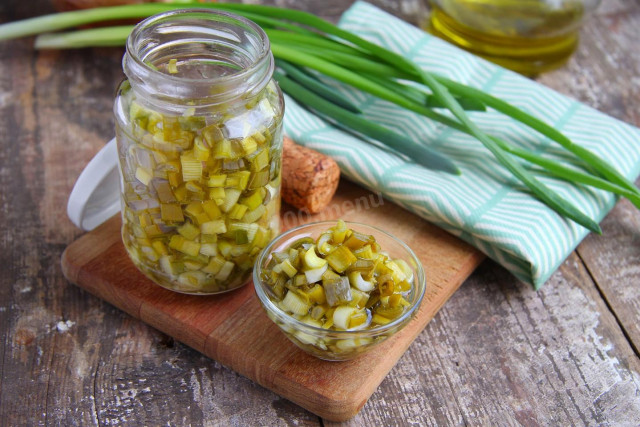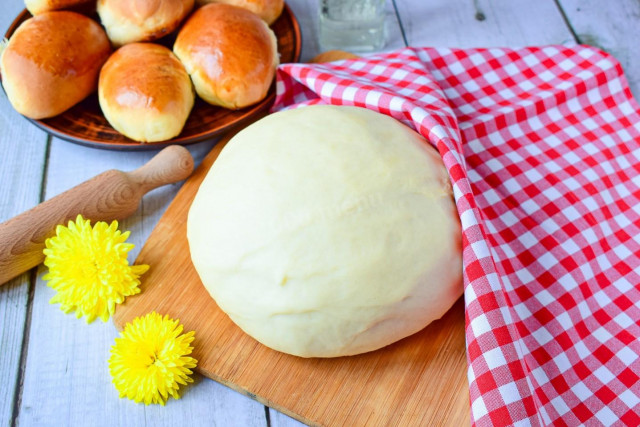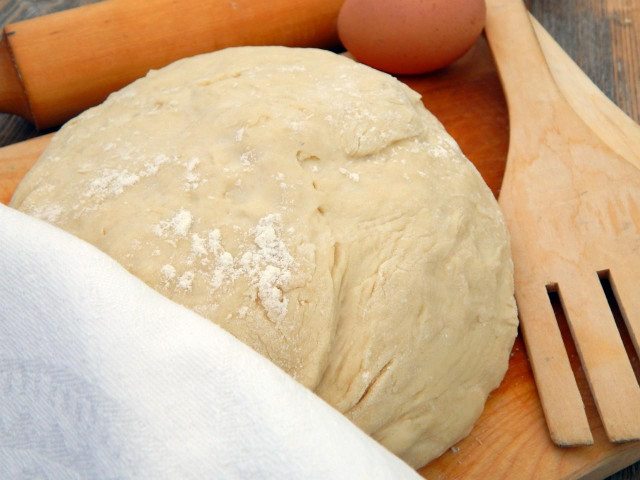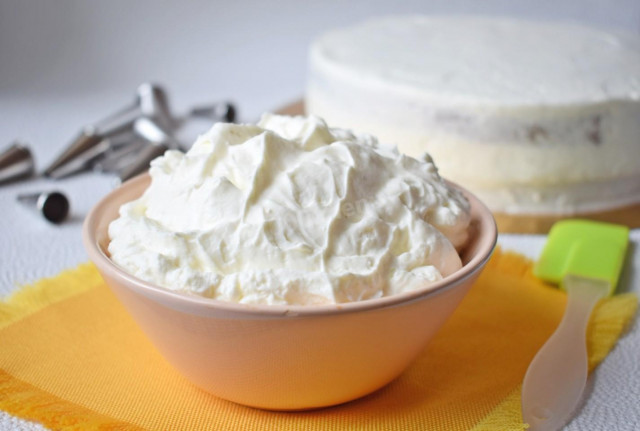Composition / ingredients
Step-by-step cooking
Step 1:
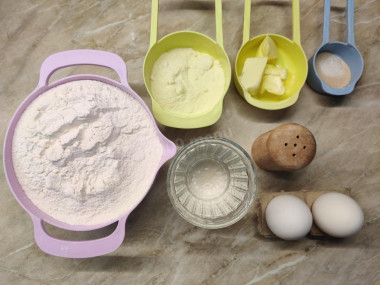
How to knead the dough with powdered milk? First prepare all the ingredients. Butter and eggs should be at room temperature. Flour of the highest grade. Yeast is dry, fast-acting. Water - filtered, heated to 40⁰C.
Step 2:
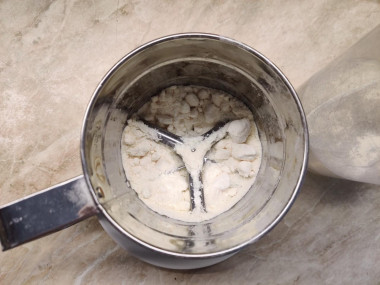
Pour warm water into a tall glass. The water should feel nice-warm, not hot. Sift the powdered milk into a glass to get rid of lumps.
Step 3:
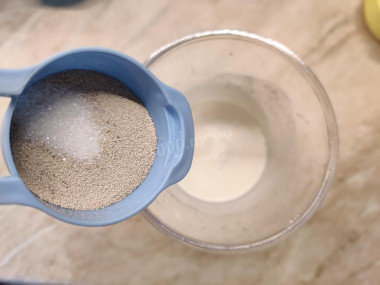
Add sugar and yeast. Stir the sourdough and leave for 20-25 minutes in a warm place. I leave the sourdough in a closed microwave oven, in which I have just warmed up a glass of ordinary water.
Step 4:
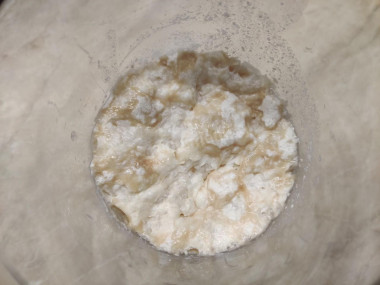
A good sourdough is a thick and lush foam cap on the surface of the milk. If the sourdough has not risen, then baking will not work.
Step 5:
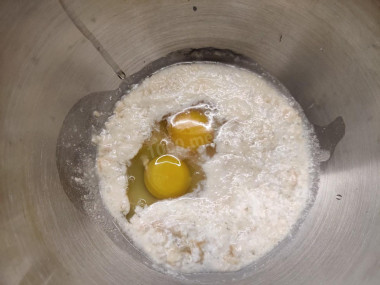
Pour the sourdough into a deep bowl, add a pinch of salt for flavor and beat the eggs at room temperature. If you plan to bake pies with sweet filling, at this stage you can add another 1 tbsp.l.sugar. If it's salted, we don't add anything. Lightly whisk the mixture with a whisk.
Step 6:

Add soft butter.
Step 7:
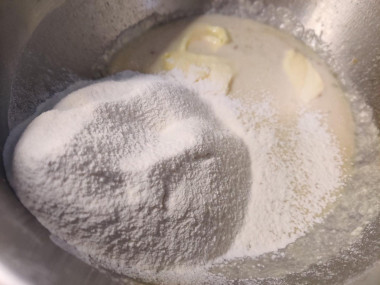
And sift the flour. Start with ⅔ the specified amount of flour and then add more, if required.
Step 8:

As you knead the dough, focus on its consistency. As soon as the dough has stopped sticking strongly to your hands, stop entering flour.
Step 9:
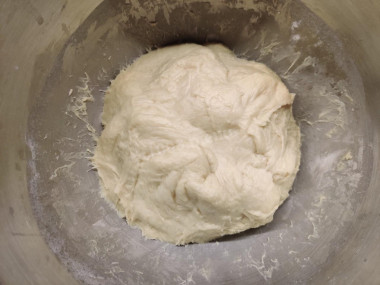
Knead the dough for 10-15 minutes until it becomes elastic. Assemble the dough into a ball and leave in a warm place for 1.5-2 hours .
Step 10:
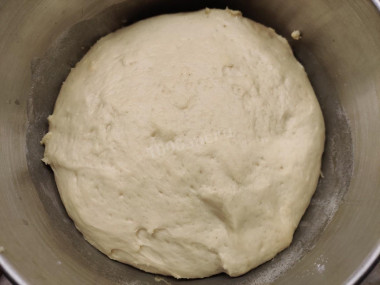
During this time, the dough will rise well. It is crushed by hand and left to approach for another 20 minutes in a warm place. After that, the dough will be ready for the formation of pies, final proofing and baking.
Pies made from dough on powdered milk turned out to be as tasty and soft as from ordinary dough. I baked with rice and egg. But if you plan to bake sweet pies, be sure to add sugar to the dough, otherwise it will be too bland.
Bon appetit!
The water in which yeast is bred should be pleasant to the touch, no higher than 40 degrees. Why is this important? In a warm environment, yeast is well activated, in a hot one it will die, and in a cold one it simply will not work.
Be prepared for the fact that you may need more or less flour than indicated in the recipe. Focus not on the amount of flour, but on the desired consistency of the dough. To avoid mistakes, read about flour and its properties!
For cooking, it is better to use filtered or bottled water that is neutral to taste. If you use tap water, keep in mind that it can give the dish an unpleasant characteristic taste.
Caloric content of the products possible in the composition of the dish
- Chicken egg - 157 kcal/100g
- Egg white - 45 kcal/100g
- Egg powder - 542 kcal/100g
- Egg yolk - 352 kcal/100g
- Ostrich egg - 118 kcal/100g
- Granulated sugar - 398 kcal/100g
- Sugar - 398 kcal/100g
- Butter 82% - 734 kcal/100g
- Amateur unsalted butter - 709 kcal/100g
- Unsalted peasant butter - 661 kcal/100g
- Peasant salted butter - 652 kcal/100g
- Melted butter - 869 kcal/100g
- Salt - 0 kcal/100g
- Water - 0 kcal/100g
- Wheat flour - 325 kcal/100g
- Milk powder - 465 kcal/100g
- Dry yeast - 410 kcal/100g
